If you’ve been diagnosed with a duodenal ulcer, you’ve probably heard of rabeprazole sodium. It’s not a cure-all, but for many people, it’s the key to stopping the burning pain and letting the lining of the gut heal. Unlike older drugs that just masked symptoms, rabeprazole sodium goes after the root cause: too much stomach acid. And it does it quietly, effectively, and with fewer side effects than many alternatives.
What exactly is rabeprazole sodium?
Rabeprazole sodium is a proton pump inhibitor, or PPI. That means it blocks the tiny pumps in your stomach lining that produce acid. These pumps, called H+/K+ ATPase enzymes, are the final step in acid creation. When you take rabeprazole sodium, it binds to these pumps and shuts them down - not all at once, but over time. That’s why it doesn’t work like an antacid you swallow for instant relief. Instead, it builds up in your system and gives you long-lasting control.
It’s available as a 10 mg or 20 mg tablet, usually taken once a day before breakfast. The 20 mg dose is standard for treating duodenal ulcers. Most people start feeling better within a few days, but healing the ulcer itself takes time - typically four to eight weeks. You can’t skip doses or stop early just because the pain is gone. The ulcer is still healing underneath.
Why rabeprazole sodium for duodenal ulcers?
Duodenal ulcers form when the protective mucus layer in the first part of your small intestine breaks down. This lets stomach acid eat away at the tissue. The two main culprits? H. pylori bacteria and long-term use of NSAIDs like ibuprofen or aspirin. Rabeprazole sodium doesn’t kill H. pylori, but it creates the right environment for antibiotics to work. That’s why it’s almost always paired with two antibiotics in what’s called triple therapy.
Studies show that when rabeprazole sodium is used with amoxicillin and clarithromycin, healing rates for duodenal ulcers jump to over 90% within eight weeks. That’s better than older PPIs like omeprazole in some trials. One 2023 meta-analysis published in the Journal of Gastroenterology and Hepatology found rabeprazole sodium had the fastest acid suppression among five common PPIs, with peak effect within two hours - faster than lansoprazole and similar to esomeprazole.
It’s also gentler on the stomach lining than older drugs. People who’ve tried ranitidine (now pulled from most markets due to contamination risks) or cimetidine often switch to rabeprazole sodium because it doesn’t interfere with liver enzymes the same way. That means fewer drug interactions, which matters if you’re on blood thinners, antifungals, or seizure meds.
How does it compare to other PPIs?
There are five main PPIs used today: omeprazole, esomeprazole, lansoprazole, pantoprazole, and rabeprazole sodium. Here’s how they stack up for duodenal ulcer treatment:
| Drug | Dose for Ulcers | Time to Peak Effect | Healing Rate at 8 Weeks | Common Side Effects |
|---|---|---|---|---|
| Rabeprazole sodium | 20 mg daily | 2 hours | 92% | Headache, diarrhea, nausea |
| Omeprazole | 20 mg daily | 2-3 hours | 88% | Headache, abdominal pain, vomiting |
| Esomeprazole | 20 mg daily | 1.5 hours | 90% | Diarrhea, flatulence, dizziness |
| Lansoprazole | 30 mg daily | 2.5 hours | 86% | Diarrhea, constipation, dry mouth |
| Pantoprazole | 40 mg daily | 3 hours | 85% | Headache, nausea, joint pain |
As you can see, rabeprazole sodium holds its own. It’s not the absolute fastest, but it’s among the top in healing rates and has one of the cleanest side effect profiles. It’s also less affected by food than omeprazole, so you don’t have to be perfect about taking it on an empty stomach - though it’s still best to take it 30 minutes before eating.
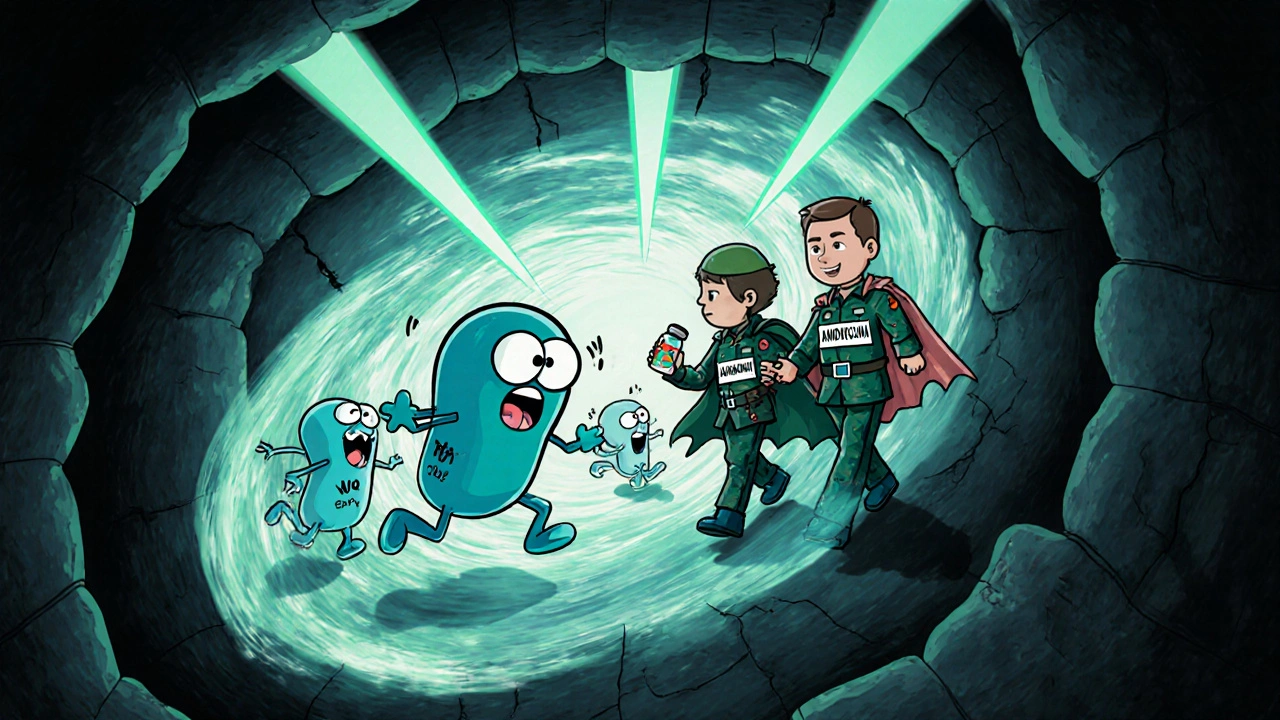
What you need to know before starting
Before you take rabeprazole sodium, tell your doctor about any other meds you’re on. It can interact with:
- Warfarin - may increase bleeding risk
- Clopidogrel - rabeprazole may reduce its effectiveness (unlike pantoprazole, which has less interference)
- Atazanavir (an HIV drug) - rabeprazole lowers its absorption
- Methotrexate - higher levels can build up in the blood
It’s also not for everyone. If you’ve had liver disease, your doctor might lower your dose. If you’re pregnant or breastfeeding, it’s considered low-risk but should only be used if clearly needed. Long-term use (over a year) may increase the risk of low magnesium, vitamin B12 deficiency, or bone fractures - but that’s true for all PPIs. For short-term ulcer treatment, these risks are minimal.
What to expect during treatment
Most people notice less burning and bloating within 2-3 days. But don’t assume the ulcer is healed just because you feel better. Stick to the full course. If you’re on triple therapy for H. pylori, you’ll take rabeprazole sodium with two antibiotics for 7-14 days. After that, you’ll continue rabeprazole alone for another 2-6 weeks.
Some side effects are normal: mild headache, loose stools, or a funny taste in your mouth. These usually fade after a week. If you get severe diarrhea with blood, muscle cramps, or a rash, stop taking it and call your doctor. Rarely, rabeprazole sodium can cause an allergic reaction - swelling, trouble breathing, or hives. That’s an emergency.
Don’t crush or chew the tablet. Swallow it whole with water. If you can’t swallow pills, ask your pharmacist about a compounded liquid form - it’s not standard, but it’s available in some cases.
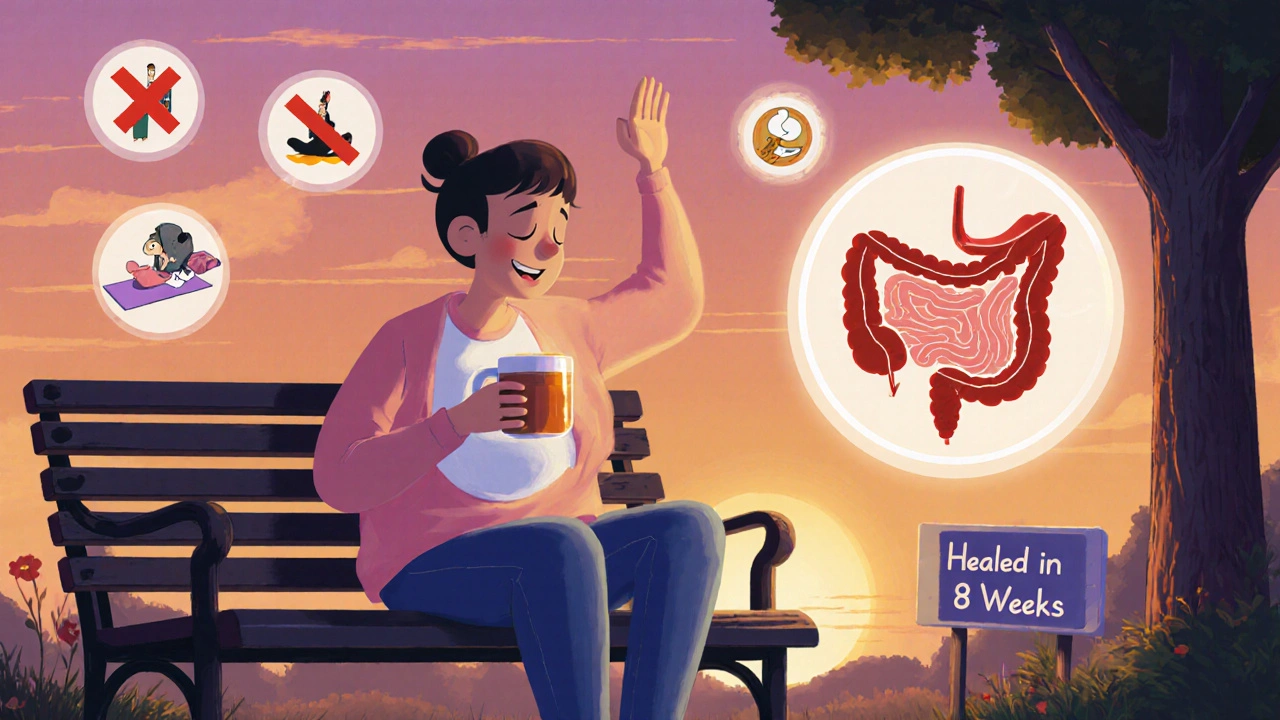
What happens after treatment?
Once you finish your course, your doctor may recommend a follow-up endoscopy, especially if you had a large ulcer or were a smoker. But for most people, symptoms alone are enough to judge success. If the pain returns, it could mean the H. pylori wasn’t fully cleared, or you’re back to NSAIDs or heavy drinking.
After healing, some people need to stay on a low dose of rabeprazole sodium to prevent recurrence - especially if they can’t stop NSAIDs or have a history of multiple ulcers. But the goal is always to use the lowest effective dose for the shortest time possible.
Many patients do well switching to lifestyle changes: cutting back on alcohol, avoiding spicy foods (not because they cause ulcers, but because they irritate healing tissue), quitting smoking, and managing stress. Rabeprazole sodium gives you breathing room - but lasting healing comes from changing habits too.
When rabeprazole sodium isn’t the right choice
There are times when another treatment might be better:
- If you’re allergic to any PPI - you’ll need an H2 blocker like famotidine instead
- If you’re on long-term clopidogrel and need acid control - pantoprazole is preferred
- If you have kidney failure - rabeprazole sodium is metabolized by the liver, so it’s safer than some other PPIs, but your doctor will still monitor you
- If you’re looking for immediate relief - antacids like Tums or Maalox work faster, but they don’t heal ulcers
And if your ulcer doesn’t improve after eight weeks of rabeprazole sodium? Your doctor will check for other causes: Crohn’s disease, stomach cancer, or a rare condition like Zollinger-Ellison syndrome. That’s why sticking to the full treatment plan is so important.
Final thoughts
Rabeprazole sodium isn’t flashy. It doesn’t make headlines. But for millions of people with duodenal ulcers, it’s the quiet hero of recovery. It doesn’t just numb the pain - it gives your body the chance to heal. Used right, with antibiotics if needed and paired with smart lifestyle choices, it’s one of the most reliable tools we have.
Don’t let fear of side effects stop you. The risks of leaving an ulcer untreated - bleeding, perforation, obstruction - are far worse. And with modern dosing and monitoring, rabeprazole sodium is safer than ever.
Can rabeprazole sodium cure H. pylori on its own?
No. Rabeprazole sodium reduces stomach acid to help the stomach lining heal, but it doesn’t kill H. pylori bacteria. It must be combined with two antibiotics - usually amoxicillin and clarithromycin - in what’s called triple therapy. Without antibiotics, the infection will return, and the ulcer will likely come back too.
How long does it take for rabeprazole sodium to start working?
You may feel less pain within 24 to 48 hours, but the full effect builds over several days. Peak acid suppression happens around two hours after taking the tablet, and the drug keeps working for up to 24 hours. Healing of the ulcer itself takes four to eight weeks, even if symptoms disappear sooner.
Is rabeprazole sodium safe for long-term use?
For short-term ulcer treatment (4-8 weeks), it’s very safe. Long-term use (over a year) may increase the risk of low magnesium, vitamin B12 deficiency, or bone fractures. That’s why doctors recommend the lowest effective dose for the shortest time. If you need ongoing acid control, your doctor will monitor you for these issues and may suggest alternatives like lifestyle changes or H2 blockers.
Can I drink alcohol while taking rabeprazole sodium?
Moderate alcohol is usually okay, but it’s not recommended. Alcohol irritates the stomach lining and can delay healing. It also increases the risk of bleeding if the ulcer hasn’t fully healed. If you’re trying to recover, it’s best to avoid alcohol until your doctor confirms the ulcer is gone.
What happens if I miss a dose?
If you miss a dose, take it as soon as you remember - unless it’s close to your next scheduled dose. Then skip the missed one and go back to your regular schedule. Don’t double up. Missing one dose won’t ruin your treatment, but regularly skipping doses can slow healing and increase the chance of recurrence.
Are there natural alternatives to rabeprazole sodium?
No proven natural alternatives can replace rabeprazole sodium for healing a duodenal ulcer. Some people try licorice root, probiotics, or honey, but none have been shown to reliably reduce acid or promote healing in clinical trials. While these may help with general gut comfort, they won’t treat the root cause. Relying on them instead of prescribed medication can lead to serious complications like bleeding or perforation.


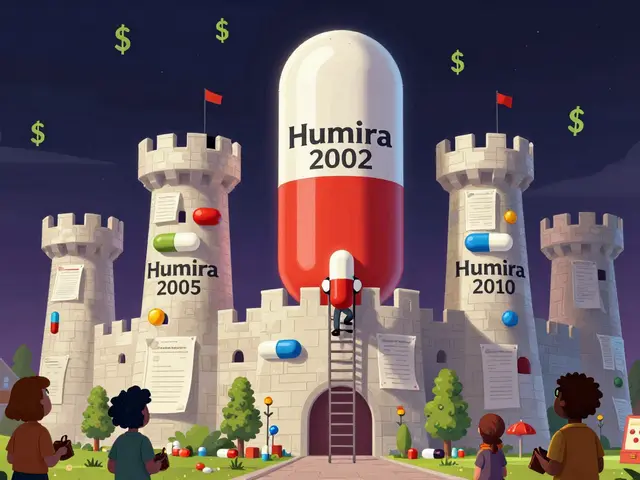


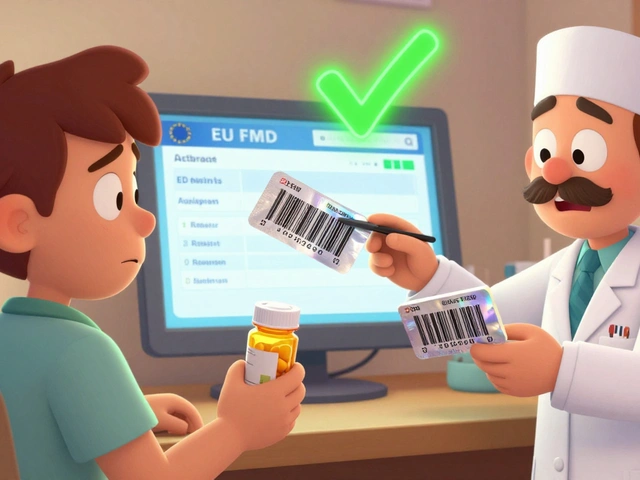
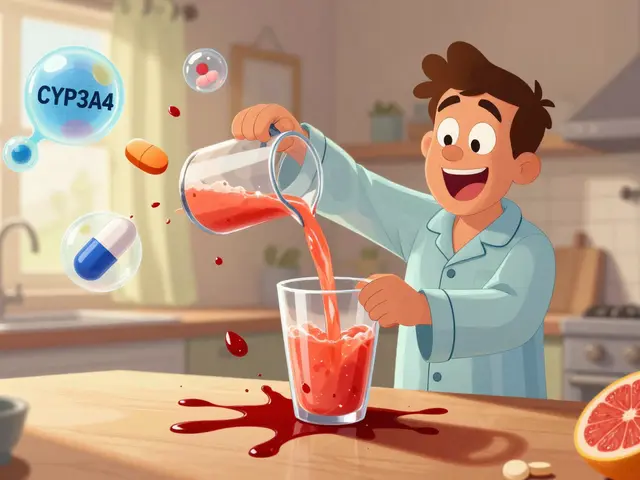
took rabeprazole for my ulcer and wow it was a game changer. no more midnight burning like my stomach was on fire. i didnt even know how bad it was till it was gone. side effects? yeah i got a lil headache and weird taste but meh, worth it.
I’m so glad this post exists. So many people think ulcers are just ‘stress’ or ‘spicy food’-but no, it’s often H. pylori or NSAIDs. And rabeprazole? It’s quiet, but it works. I’ve seen patients heal faster on it than omeprazole, especially if they’re on other meds. Just don’t stop early-even if you feel fine. Healing’s happening under the surface.
triple therapy is the real MVP here. rabeprazole alone wont kill h. pylori. you need the antibiotics. dont be that person who skips the pills because you feel better. the bacteria are still there laughing at you.
Okay but have you read the long-term risks? Bone fractures, B12 deficiency, magnesium crashes? I’ve seen people stay on this for YEARS because they’re scared of acid reflux. It’s not a lifestyle drug. It’s a band-aid for a broken system. You need to fix your diet, your stress, your sleep. Not just swallow a pill and call it a day.
Let’s be real-rabeprazole is the ‘premium’ PPI… for people who can’t afford esomeprazole but still want to feel like they’re on the ‘luxury’ version. 92% healing rate? Cute. But honestly? The difference between this and omeprazole is statistically negligible. And the ‘faster acid suppression’? Bro, you’re not curing cancer. You’re just turning down the acid dial. Also, ‘compounded liquid form’? That’s not a thing you casually ask for at CVS. You need a pharmacy wizard and a prayer.
you got this. i know it feels overwhelming but sticking with the full course? That’s the win. every day you take it, you’re giving your gut a chance. no guilt if you miss one. just get back on track. healing isn’t perfect. it’s persistent.
so rabeprazole is the ‘quiet hero’?? 😭😭😭 i cried reading that. after my ulcer, i thought i’d never eat pizza again… but now? I’m back. with a side of anxiety and a bottle of Tums just in case. also, why does everyone act like H. pylori is some secret? My grandma had it in the 80s and they just gave her antacids. We’ve come so far… or have we? 🤡
It is imperative to underscore that the therapeutic efficacy of rabeprazole sodium is contingent upon strict adherence to the prescribed regimen, particularly in conjunction with antibiotic co-therapy for Helicobacter pylori eradication. The pharmacokinetic profile of this proton pump inhibitor demonstrates favorable hepatic metabolism, rendering it a suitable option for patients with compromised renal function. However, concomitant use with clopidogrel necessitates careful clinical evaluation due to potential CYP2C19-mediated interactions. Long-term utilization should be periodically reassessed in light of emerging evidence regarding micronutrient deficiencies and bone mineral density alterations. The imperative remains: pharmacologic intervention must be complemented by holistic lifestyle modification to achieve durable remission.